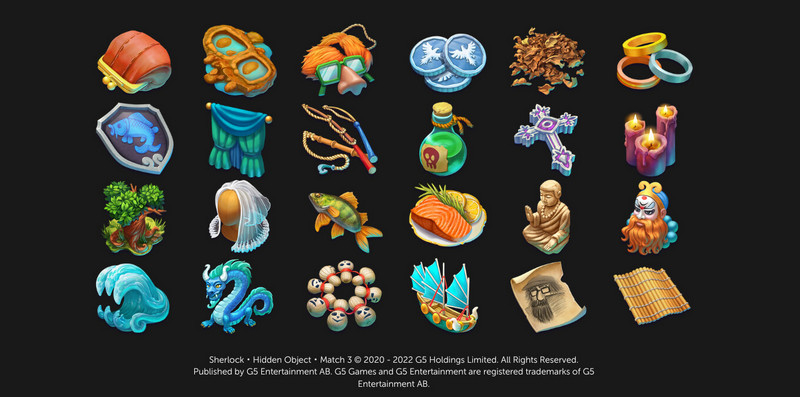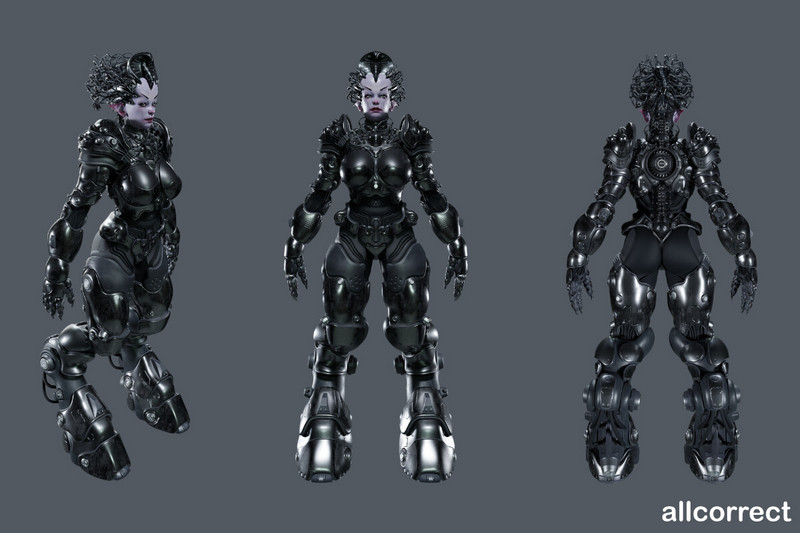In any field, there are terms that may be unclear to those who work in it. The creation of game art is no exception.
For instance, try to decipher this standard project manager’s phrase:
“We have all the references for rendering the 3D model; it’s high poly in hand-paint, then it goes into rigging for animation—that’s the pipeline.”
If that makes sense to you, congratulations, you’re probably not a newbie in the industry! If it sounds like something we made up, we invite you to get acquainted with the Game Art Dictionary compiled by our charming project manager, Anastasiia Tsydenova.
Common Production Terms
Pipeline — the stages of object production, which is dependent on the type of work. For example, the pipeline in 2D graphics may consist of black and white sketches or concepts, colored sketches, and final renders. Typically, these are the stages of presentation and task acceptance by the client.
Feedback — the response from an art lead or client aimed at adjusting the artist’s direction and bringing the result closer to the client’s artistic vision or references. Working with feedback is an excellent way for an artist to develop their skills.
References — the graphical expression of the client’s artistic vision. They can be both qualitative (level of detail in the image, shading, reflections) and stylistic (such as the casual graphics in a particular game).
Common Art Terms
Asset — a standalone artistic unit that the client can use in their work as a whole, without dividing it. An asset can be a small object (an icon, a key) or a complex one (a location background). Examples include icons, characters, environments, and backgrounds.
Sketch (or concept) — a preliminary visual expression of the client’s idea used to easily explore options. Usually prepared in multiple versions, without color, and with minimal detailing. A term common to both 2D and 3D graphics.
*Concept art, however, is a distinct type of work. Concept art is done at the early stage of game art creation, where an artist creates visual representations of characters, environments, and other assets to be used as a guide for further development.
Render:
For 2D graphics: the final refinement of an image to match the references or the client’s desired vision, including placement of shadows, reflections, volume detailing, background elements, etc.
For 3D graphics: technical (software) processing of a file, which involves transforming a 3D image into a 2D one by combining the model, textures, lighting, surface reactions, additional effects (smoke, steam), and more.
 Asset—a 2D background for a casual merge game. Sketch (concept)—with variations; render—a final image with all necessary details refined.
Asset—a 2D background for a casual merge game. Sketch (concept)—with variations; render—a final image with all necessary details refined.
Specific Art Terms
2D graphics — a “flat” object drawn only from the visible side of the viewer. It serves as the starting point for all other types of graphics (3D models are also usually initially prepared in 2D sketches).

2D Animation — 2D objects come to life through several methods. The main ones are:
Frame-by-Frame — traditional animation, realized by manually drawing each frame. This is the most labor-intensive way of creating animations.
Skeletal — “bones” and “joints” are assigned to pre-cut layers of the object, along which the details will move. Relatively simple to implement, but with a corresponding level of quality (movements might not be smooth).
3D Graphics — three-dimensional object rendered from all sides. It can be used for animation and as a base for 2D (for instance, for proper shadow display).
Key Requirements
Polygon Count — the number of faces that make up an object. The higher the polygon count, the more detailed the object is.
High Poly — a model with a high number of polygons, maximally detailed. The characteristic feature is a large file size, which is unsuitable for mobile games.
Low Poly — a model with a low number of polygons, usually compensated for by detailed textures.
Texture Type — the quality of the visible surfaces of an object (applied to the object like a sticker — covers from all sides).
Procedural Textures — generated programmatically, allowing for adjustment of attributes like illumination, reflection, and graininess.
Hand-Paint — created by manual drawing.

3D Animation includes rigging (assigning “bones” and “joints”), blocking (posing the model), and refining movements between key poses. Key requirements include the degree of realism in movement, and timing.
Pixel Art — a distinct style of graphics. This field of art requires specialized knowledge from the artist involved (such as how to depict colors and shadows to match the style), and uses a limited color palette and specific creation techniques (for example, transitions between colors are usually manually drawn). Specialized software such as Aseprite is often used, allowing the specification of pixel count, color count, and animation of images, though it is also possible to use tools such as Photoshop.

Returning to the mind-boggling phrase from the beginning of the article—now its content is fully understood.
We have all the references for rendering the 3D model; it’s high poly in hand-paint, then it goes into rigging for animation—that’s the pipeline.
We have a complete set of materials describing the client’s vision for creating a 3D model, which needs to be highly detailed with hand-painted textures. Then, a skeleton for this model needs to be created for animation purposes. This is the expected workflow.
Using professional slang speeds up communication, doesn’t it?



